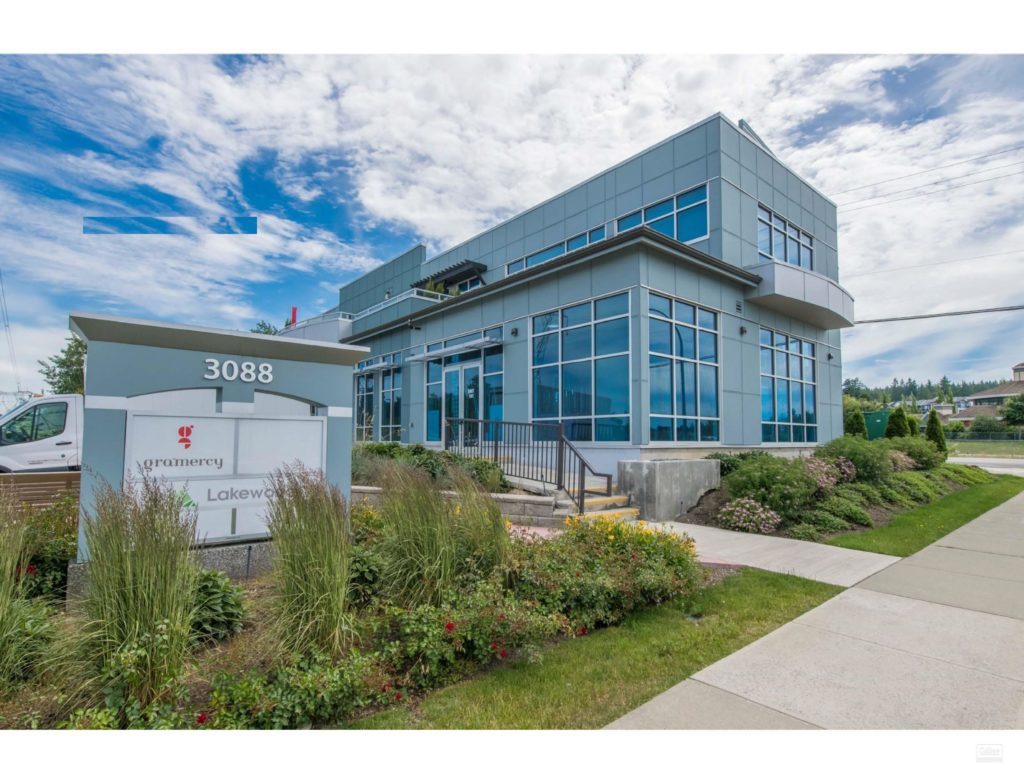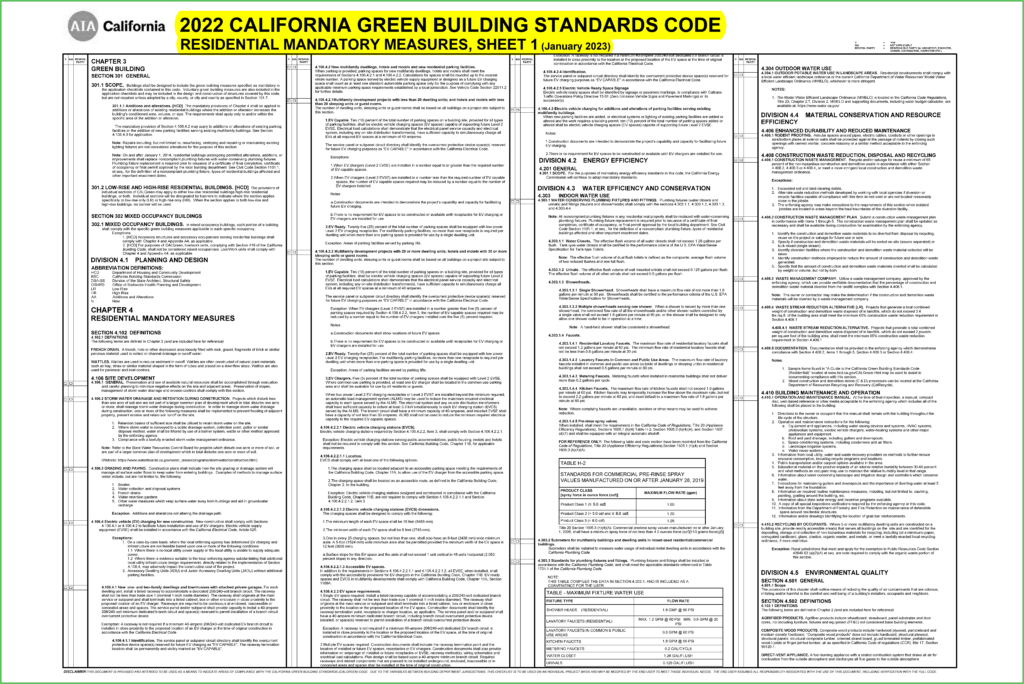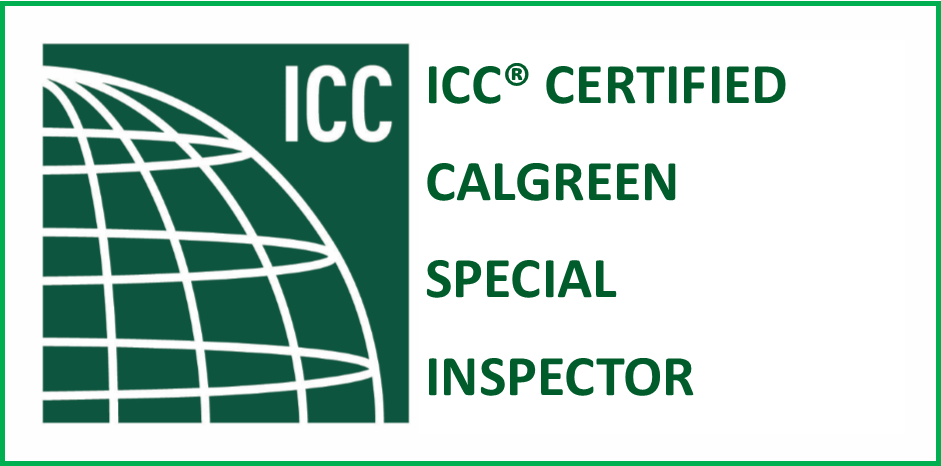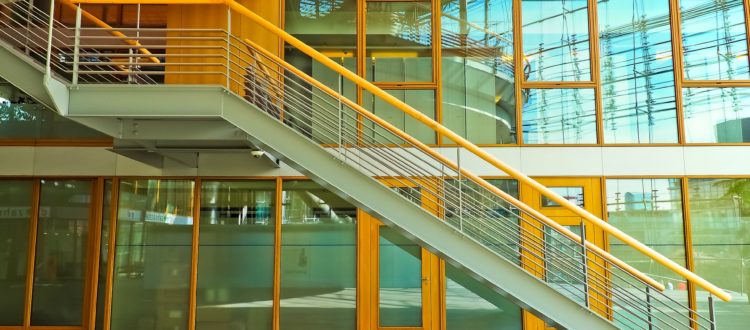CalGreen for Commercial Buildings

CalGreen for commercial buildings requires the services of a CalGreen specialist. Unfortunately for building owners, this rarely happens.
CalGreen for most commercial buildings is typically handled by either the architect or the mechanical engineer. These firms rarely have an in-house CalGreen specialist. Instead, the design architect or engineer ends up pasting a CalGreen checklist into their plans at the last minute.
While a design architect or engineer may have some understanding of the checklist, they have not been professionally trained in the code. This limited knowledge of the code is not adequate to fully understand the code requirements and the impact each checklist item may have on the project.
The CalGreen Code is not like any other of the California Building Standards Codes. It not only requires an understanding of the code intent but also an understanding of the wide range of sustainable aspects to green building design. Many of the sustainable aspects of this code are outside of the design issues that these professionals typically encounter.
For example, the LEED program requires a LEED certified professional to manage the process. This is because the multi-disciplinary requirements in the LEED program and the unique process it entails. The CalGreen Code, while less complex than the LEED certification process, still includes many of the same requirements and documentation. Where the design professionals fall short is the lack of understanding of the over-all CalGreen process.
Another aspect to architects and engineers doing the CalGreen checklist is the lack of dedicated time. Neither architects, nor engineers, budget hours for CalGreen. Instead, it’s just another hurdle they must clear among the many that encroaches on their schedules. The CalGreen checklist gets done the day before the project goes out to permit. A checklist gets downloaded, all the boxes are checked, and it is inserted into a drawing. This does not fulfill the design professional’s responsibility for due diligence and may expose them to claims for non-performance.
Every architect and engineer struggles with task saturation. Unfortunately, this reality leaves the CalGreen portion of the projects with far less attention than it deserves.

The AIA CalGreen Checklist – A Recipe for Disaster
One of the biggest problems that architects create for themselves is using the California AIA’s Non-residential Mandatory Measures Checklist. This checklist causes more problems in closing out the CalGreen portion of a project than any other!
One point that many architects seem to be missing is that the checklist should only show those requirements applicable to your project. This is noted on the AIA website but seems to be ignored by most architects. Project after project goes out for permit with the entire AIA checklist exactly as copied off the AIA website. This, too, represents another level of the design professional failing to exercise due diligence in complying with the CalGreen code.
While the California AIA provides an AutoCad version of the checklist, it is problematic to edit. The text and column format become out of alignment, making editing a time-consuming process. This may also be part of the reason few architects edit the checklist as required.
Another point that many architects don’t understand is that, even if you use the right checklist, it takes a CalGreen specialist to determine which checklist items truly apply to your project. Just because an item is on the checklist does not mean you must comply with it.
I’m not sure what the AIA had in mind when they created this checklist. They may have thought they were making it easy for architects to incorporate CalGreen into their projects. Unfortunately, the AIA checklist misses the mark on every level.
Not Project Specific: The checklist includes mixed occupancies, phased projects, school (DSA) projects, requirements for multi-tenant buildings, commercial kitchen requirements, commissioning requirements (only applicable to buildings over 10,000 square feet) and requirements for supermarkets.
Not in Compliance with Local Jurisdictions: Most building departments in the state have developed their own version of the CalGreen checklist. Most of these have adopted amendments to the state code which over-rides the state code. It’s true – the CalGreen Code, unlike the other state building codes, allows local jurisdictions to change the code at will. This means many local checklists drop, or add, any number of state code requirements. As a result, submitting the AIA checklist is not acceptable in most jurisdictions in the state!

Every Commercial Project Requires a CalGreen Professional
Many building permits are submitted by copying and pasting the building department’s checklist into the permit plans, and checking every box. While this is a step up from using the AIA checklist, it is still not adequate. This practice shows a lack of due diligence, at best. At worst, it will cost the building owner time and money.
Filling out the CalGreen checklist on a commercial project requires and in-depth knowledge of the CalGreen Code. The language in the checklist is an abbreviated summary of each code requirement. The person filling out the checklist must know the details of the specific code section and how it is interpreted by the code officials. This takes the knowledge and experience of a CalGreen professional who has been trained in the code.
Completing the checklist is only part of the job. A CalGreen consultant needs to review the architectural, landscape, Title 24, power & lighting, and plumbing plans to ensure all of the CalGreen requirements are included in the permit documents. In addition, the specific scope requirements for the general contractor need to be noted. This process takes time and is not something that can be thrown together at the last minute.

The Hidden Liabilities of the Checklist
There are those who think if they can fill out the checklist correctly, then they have completed their CalGreen obligations. They have not. This false belief can result in a significant liability exposure on their project.
A very large part of the CalGreen Code deals with documentation and verification during construction. This represents a significant amount of work for the general contractor and their subcontractors.
The CalGreen checklist is not part of the construction documents and does not place a liability on the contractor. The checklist is a means for the design professional to show to the building department how, and where, they are complying with the code.
It is a basic tenet of construction law that a contractor is only liable for those items “that are reasonably inferable at the time of bid”. The CalGreen requirements must be noted in the construction documents. If not, the general contractor can claim they were not in his bid.
We frequently see this issue arise at the end of a project when applying for beneficial occupancy. The building department will ask the contractor for all the required CalGreen documentation. This is the point where the GC turns back to the architect and asks,
“Where in your construction documents does it specifically require me to provide this scope of work, Mr. Architect?”
This is where add services and delays to beneficial occupancy become a liability for the design professional. The scope of work required by the general contractor needs to be clearly defined in the construction documents.
Our Recommendations
Handling CalGreen for commercial buildings professionally is neither costly nor complex. It does, however, require a CalGreen specialist. Here are a few of our recommendations to get you permit documents started on the right path.
- Hire a CalGreen consultant. It’s not expensive. A small commercial project from our company may cost as little as $2000. A very large commercial project may cost only $5000. The fees are small and well worth the investment.
- Never, ever, use the California AIA checklist on any permit submittal.
- Have your entire permit set reviewed by the CalGreen specialist prior to permit submittal to verify all requirements are documented.
- Include notes on plans that clearly define the contractors’ CalGreen scope of work during construction.
Further reading:
You can view and download the California AIA’s Checklists here:
https://aiacalifornia.org/calgreen-checklists/
To learn more about the LEED program check out their website here:
At CalGreen Energy Services we are specialists in CalGreen for commercial buildings. CalGreen is our only business. If you have a CalGreen question please feel free to give us a call. We are happy to share our knowledge.
Call us today and let us show you how we can help with your project.
Gary Welch
Email: gary@calgreenenergyservices.com
Phone: 707-328-5299


Gary Welch has over 35 years experience in the field of sustainable building design. He is the CEO of CalGreen Energy Services. Gary is an ICC Certified CalGreen Special Inspector and Plans Examiner.

